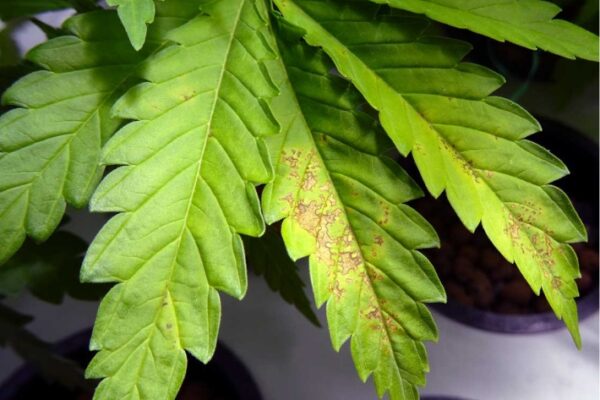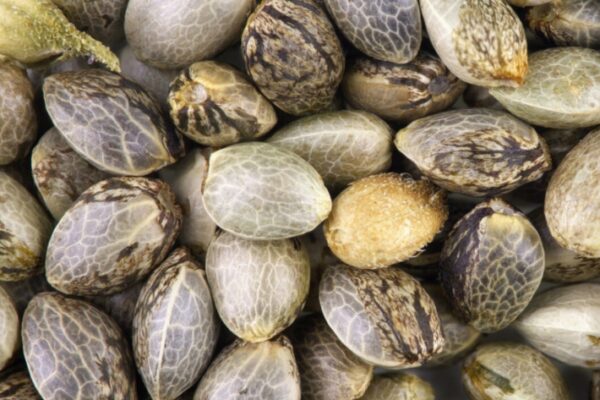What’s Growing On DGC? The Dude and Scotty are Hanging Out Talking Cannabis News, Culture and Growing.
THIS EPISODE IS BROUGHT TO YOU BY:
DGC Pros
*NEW* RealDGC.com
DUDE GROWS MERCH
Support The Dude Grows Show on Patreon
Support Us When Shopping On Amazon
RealGrowers Recharge
RealGrowers Grow Dots
*NEW* Real Grow Lab
Recharge Canada – Dank White North
DudeGrows.ca
2024 DGC Cup
WHAT’S GROWING ON?:
Do I really have to worry about pH? (That’s a complicated question lol)
pH problems Posted by Terpking
Google search: pH products hydroponics (what’s with the flower?)
In hydroponics (where these products originated) pH is incredibly important. There’s no rhizosphere! Let’s get into the Rhizosphere: Plants respond to nutrient deficiency by altering root morphology, recruiting the help of microorganisms and changing the chemical environment of the rhizosphere. Components in root exudates assist plants in accessing nutrients by acidifying or changing the redox conditions within the rhizosphere or directly chelating with the nutrient. Exudates can liberate nutrients via dissolution of insoluble mineral phases or desorption from clay minerals or organic matter where they are released into soil solution and can then be taken up by the plant. The nutrients most limiting to plant growth are nitrogen and phosphorus.
ChatGPT, please rewrite this so 11 graders can understand it:
When plants don’t get enough nutrients, they change the shape of their roots, and work with tiny living organisms to adjust the chemical mix in the surrounding soil. They release substances from their roots that help them get nutrients by either making the soil more acidic, changing its oxidation state, or directly grabbing the nutrients. These substances can break down hard-to-dissolve minerals or free nutrients stuck to clay or organic matter in the soil. This way, the nutrients get released into the soil where the plant can absorb them. The nutrients that plants usually need the most are nitrogen and phosphorus.
Soil microbes play an instrumental role in enabling plants to absorb nutrients even outside their ideal pH ranges through several key mechanisms:
pH Modification: Certain microbes can alter the local pH of the soil around the plant roots. For instance, bacteria and fungi often excrete organic acids as metabolic byproducts, which can acidify the surrounding soil. This local change in pH can increase the solubility of certain nutrients that are otherwise less available at the original soil pH. For example, in alkaline soils, acidification can help solubilize phosphates and micronutrients like iron and manganese, making them more accessible to plants.
Nutrient Transformation: Microbes such as nitrogen-fixing bacteria and mycorrhizal fungi convert nutrients into forms that are more easily absorbed by plants. Nitrogen-fixing bacteria in the legume rhizosphere convert atmospheric nitrogen into ammonia, a form that plants can assimilate directly. Similarly, mycorrhizal fungi increase phosphorus uptake by converting less soluble forms of phosphorus into more soluble forms, thereby facilitating its absorption even if the soil pH is not optimal for direct phosphorus uptake by roots.
Chelation and Complexation: Some soil microbes produce compounds known as siderophores, which bind tightly to micronutrients like iron and manganese. These siderophores chelate (bind) the nutrients, preventing them from precipitating out of solution and keeping them in a bioavailable form that can be readily absorbed by plant roots. This is particularly important in alkaline soils where certain nutrients tend to become insoluble.
Release of Root Exudates: Plants themselves, influenced by microbial activity, can release specific root exudates that change the chemical environment in the rhizosphere. These exudates can solubilize bound nutrients and alter the soil pH locally, which in conjunction with microbial activity, helps plants absorb nutrients more efficiently.
Decomposition and Mineralization: Microbes decompose organic matter in the soil, a process which mineralizes nutrients that were part of complex organic compounds, turning them into inorganic forms that plants can use. This process of mineralization is crucial for the cycling of nitrogen, phosphorus, and sulfur—all vital to plant health.
These microbial activities create a more favorable microenvironment around the plant roots, allowing plants to uptake necessary nutrients even if the broader soil conditions are not within the ideal pH range. This interaction between plants and soil microbes not only aids in nutrient absorption but also enhances overall plant resilience to less-than-ideal soil conditions.
FALL OF PROHIBITION/ MARKET REPORTS:
Kenny & I are going to get good at making live rosin! Dry herb vaping takes up a lot of weed!
COMMENTS:
Soup – Take Better Pics with: Clip on Macro and Wide Angle Lenses for Smart Phones
Ocannabis613 – Perp Burn Out man! (how much weed do you need now that it’s at the store?)
18 or 24 Hour Veg debate:
eliqinthewolverinestate6729 – I agree with Scotty. 24 hours light slows vegetation growth. Roots grow day and night. Vegetation grows more when the lights off. While it might seem counterintuitive, most of the cell division in cannabis plants occurs during the night. The energy produced during the day through photosynthesis is stored and then utilized for growth when darkness falls. Running 24/7 seems to off balance plants. Meaning more root growth. Plants are always trying to balance roots and vegetation. While in greenhouses it seems to be more vegetation growth than root growth. More roots then vegetative growth means plant grows great. Where more vegetative growth than roots the plant don’t grow big.
About adding Co2:
Nopuff2tuffwediveat5 – I’ve done many crops w/out C02 and relied on good nutrients and kick ass genetics – pounds out of my 4×4 of heavy, dense buds…BUT – I’ve been using the Exhale CO2 bags in my sealed 4×4 tent and the damn things WORK!!! Not sufficient for anything other than smaller tents and the tent should be zipped up most/all the time but they’re worth the $50/$60 and you can easily get two runs out of each sack!
DeltaKiloExotics – Does anyone actually watch and observe their plants? I can look at mine and know they will need water tomorrow….people need to learn how to read their plants instead of following someone’s “recipe”. Every grow is different, experiment with your setup and strains and figure out what works for you…
Linnaeus’s flower clock (kind of a coincidence because I learned about it last night)
No idea the context:
lethal2453 – No! I am sick of being a husband to a tank of water. A hybrid organic in a tent is the same as having a veggie garden.
FUN STUFF (SOCIAL MEDIA, NEWS, MEMES):
MAKE US LAUGH MEMES/ SOCIAL MEDIA/ IS IT REAL:
SUPPORT YOUR LOCAL GROW SHOP:
Help us build the Recharge store finder. Send Stick packs to your local store. Visit realgrowers.com/samples and Fill out the form. Tell us about your local grow shop. We’ll send free samples for them and you.







Leave a Reply
You must be logged in to post a comment.